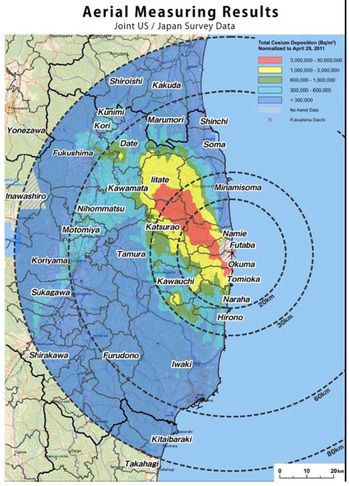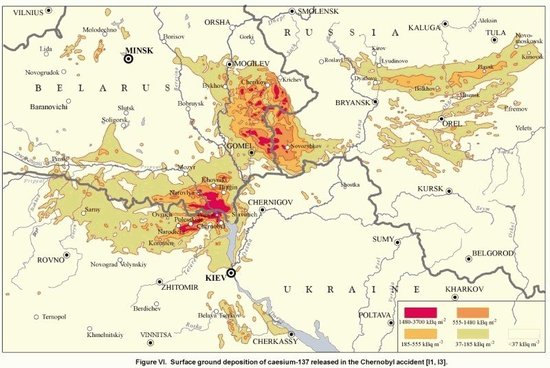ELSI Blog
113 Science, Public, and Government
On June 4 something unusual (whether or not unexpected I do not know) occurred in a Diet panel of Japan. According to the June 5 Mainichi Shinbun:
Japan's three leading constitutional scholars shrugged off a
package of security reform bills as "unconstitutional" before a
Diet panel on June 4, raising concerns that the experts' criticism
may affect parliamentary deliberations on the controversial
legislation.
The three professors were invited to speak before the House of
Representatives Commission on the Constitution, where they all
clearly stated that the security-related bills pushed by Prime
Minister Shinzo Abe's government -- including legislation that
would allow Japan to exercise the right to collective self-defense
-- violate war-renouncing Article 9 of the Constitution.
If you are familiar with how Japanese politics works, you can see how unusual this is. These three scholars were selected by the Commission members, in which the current ruling parties, LDP and Komeito are the majority. LDP has thus pretty strong power on choosing which scholars to invite, and should have tried hard to find someone who supported the security reform bills pushed by the Abe administration. Apparently, they failed to find any.
As I wrote, this event was quite unusual, and usually LDP and the government have no difficulty in finding scholars who fully support their views, on almost any subject. As a researcher of natural science, one might think that would be the case for social or political "sciences", which lack the hard base of fundamental laws of physics, and that when natural science is concerned even the Japanese Government cannot completely control what experts say.
Unfortunately, I have experienced several cases in which the obvious scientific facts have been neglected by the government or government-selected boards of experts.
One example is what happened after the accident of Fukushima-Daiichi Nuclear Power Plant (FNPP) caused by the 2011 Tohoku earthquake. On March 11, 2011, An earthquake of magnitude 9.0 struck the north-east area of Honshu Island, Japan. The earthquake was followed by huge tsunamis, which hit the seaside area of Tohoku. Many cities and plants were heavily damaged, and damaged plants included FNPP. In the FNPP site, there were six reactors. At the moment of the earthquake, three of them were under maintenance (No. 4, 5 and 6), but the other three were in full operation. Fission chain reaction was automatically halted after the earthquake, but these three reactors experienced so-called "station blackout", and there occurred complicated chain of failures and mistakes in the operations of emergency cooling system. As a result, these three reactors experienced a "meltdown", and a large amount of radioactive elements was released from them. By now it is well known that major releases which caused the pollution of Fukushima and other areas of the Honshu Island took place on March 12, 15, 21, and 22, and the total amount of release is of the same order as that of the Chernobyl accident.
 Copyright International Atomic Energy Agency,
Copyright International Atomic Energy Agency,
https://www.iaea.org/sites/default/files/fukushima_180511.jpg
 Copyright United Nations Scientific Committee on the Effects of Atomic Radiation,
Copyright United Nations Scientific Committee on the Effects of Atomic Radiation,
http://www.unscear.org/images/ContaminationMap_Cs_BeUkRu_Fig_VI.jpg
However, it took a very long time for Tokyo Electric Company (TEPCO), Fukushima Prefecture and the Japanese Government to admit the obvious fact that a huge amount of radioactive elements was released (about one month after the accident) and that meltdown occurred (two months and half). This huge delay caused very serious outcomes: millions of people in Fukushima and neighboring areas were forced to stay there without any countermeasure against radioactive dose.
If there was no way to tell how serious the accident was at that time, one might be able to argue that the "mistake" of TEPCO and the Japanese Government was inevitable. However, it was actually quite easy to estimate how serious the accident was. I'm not writing this as a hindsight, but from the estimate I did in the first week after the FNPP accident. I estimated the amount of released radioactive elements in three different ways. First one is based on first-principle calculation. If you can estimate the typical amount of radioactive elements fallen to ground, you can obtain the total amount by multiplying it by the ground area. In the second method, I used the result of accident simulations published by a governmental research agency. For a situation very similar to what happened in Fukushima, it was predicted that 1-10% of I-131 would be released. In the third method, I compared the reported ground pollution near FNPP with those after the Windscale and Chernobyl accidents, and obtained the total release by multiplying the estimated total release of these accidents by the ratio of ground pollution. Not surprisingly, the orders of the results of these three methods agreed: Amount of radioactive elements, excluding rare gas such as argon and krypton, was around 10^17-18 Bq. These estimates turned out to be in good agreement with the estimates of TEPCO and government agencies published months after the accident.
On the other hand, the estimate by the government at that time was that the amount of release was around 10^15 Bq or less. Thus, no countermeasure against radioactive dose was taken, except for the evacuation of the areas within 20km from FNPP. The highest dose rate measured outside this evacuation area, obtained by a monitoring car of Ministry of Education (MEXT), was 330 microsievert/hour, or around 10^4 times higher than the typical natural dose rate in Japan. Initially, dominant radioactive elements were I-131, Te-132 and other short-lived ones. Thus, in several weeks, the dose rate in most of places were reduced by a factor of 10 or so. This means that, if evacuation of heavily polluted area had been done properly, lots of people could have avoided unnecessary exposure.
Well, as I wrote, MEXT did the measurement. Thus it is 100% clear they knew how serious the accident was. They had the prediction system called SPEEDI, which can be used to predict the pollution given the time profile of the release, and they were able to use this program to backtrack the amount of release from the actual pollution. And released documents have proven that they did so.
I wrote my estimate on my blog and twitter. I also tried to reach MEXT through various routes, without much success.
I do not have the clear answer to the question of why the government hid the truth for weeks. However, if we take a closer look on what the Japanese government and electric companies have been doing and saying on nuclear power plants, there are so many cases of hiding facts and fabricating numbers. So it seems they did what they usually do. Naturally, they continue to do so, and are working hard to resume the operation of nuclear power plants. Thus, I can safely (well...) predict that another accident will take place within several decades.
Another example of my experience of fabrication of numbers was what happened in the initial design phase of the K computer. Initially, both accelerator-based designs and "general-purpose" designs based on vector or scalar processors were considered. Accelerator-based designs were based on proposals from NAOJ (well, my group) and from University of Tokyo (Prof. Hiraki). Both would have achieved the peak speed of 10PF for the power consumptions of 1.7MW and 0.82MW for the two proposals. These two groups, and other four groups including Fujitsu and NEC, which proposed their scalar or vector machines, submitted their proposals in summer 2006.
On March 27, 2007, decision was made to choose two "general-purpose" architectures and not to use accelerator-based designs. The committee materials were made open for viewing on June 2012, following the request from Committee on Audit and Oversight of Administration, House of Representatives. http://www.mext.go.jp/b_menu/shingi/gijyutu/gijyutu2/022/shiryo/1321896.htm
It contains presentation material which states that the power consumption of accelerator-based proposals are "~10MW", quite different from what was in the proposals (1.7 and 0.82 MW). From a mathematical point of view it might not be impossible to claim that "~10" contains 1.7, or even 0.82, and that was exactly what the MEXT/RIKEN people added as a note when these materials were made open. Since the committee of March 27, 2007 was a closed one, neither Prof. Hiraki nor I have seen the material, until 2012.
My conclusion here is that there is something seriously wrong in the relationship between scientific research and governmental policy making process in Japan, and policy making for science is no exception.
For a young researcher, his/her future is clearly more important than the future of the scientific research of one country. However, not-so-young people might have some responsibilities...











